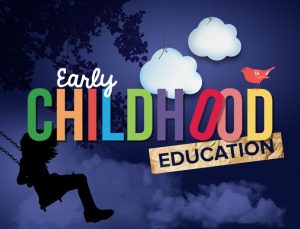Early Childhood Education Reading Answer
IELTS Academic Reading Passage

New Zealand’s National Party spokesman on education, Dr Lockwood Smith, recently visited the US and Britain. Here he reports on the findings of his trip and what they could mean for New Zealand’s education policy
A
‘Education To Be More’ was published last August. It was the report of the New Zealand Government’s Early Childhood Care and Education Working Group. The report argued for enhanced equity of access and better funding for childcare and early childhood education institutions. Unquestionably, that’s a real need; but since parents don’t normally send children to pre-schools until the age of three, are we missing out on the most important years of all?
B
A 13 year study of early childhood development at Harvard University has shown that, by the age of three, most children have the potential to understand about 1000 words – most of the language they will use in ordinary conversation for the rest of their lives.
Furthermore, research has shown that while every child is born with a natural curiosity, if can be suppressed dramatically during the second and third years of life. Researchers claim that the human personality is formed during the first two years of life, and during the first three years children learn the basic skills they will use in all their later learning both at home and at school. Once over the age of three, children continue to expand on existing knowledge of the world.
C
It is generally acknowledged that young people from poorer socio-economic backgrounds fend to do less well in our education system. That’s observed not just in New Zealand, but also in Australia, Britain and America. In an attempt to overcome that educational under- achievement, a nationwide programme called ‘Headstart’ was launched in the United Slates in 1965. A lot of money was poured into it. It took children into pre-school institutions at the age of three and was supposed to help the children of poorer families succeed in school.
Despite substantial funding, results have been disappointing. It is thought that there are two explanations for this. First, the programme began too late. Many children who entered it at the age of three were already behind their peers in language and measurable intelligence. Second, the parents were not involved. At the end of each day, ‘Headstart’ children returned to the same disadvantaged home environment.
D
As a result of the growing research evidence of the importance of the first three years of a child’s life and the disappointing results from ‘Headstart’, a pilot programme was launched in Missouri in the US that focused on parents as the child’s first teachers. The ‘Missouri’ programme was predicated on research showing that working with the family, rather than bypassing the parents, is the most effective way of helping children get off to the best possible start in life. The four-year pilot study included 380 families who were about to have their first child and who represented a cross-section of socio-economic status, age and family configurations. They included single-parent and two-parent families, families in which both parents worked, and families with either the mother or father at home.
The programme involved trained parent- educators visiting the parents’ home and working with tire parent, or parents, and the child. Information on child development, and guidance on things to look for and expect as the child grows were provided, plus guidance in fostering the child’s intellectual, language, social and motor-skill development. Periodic check-ups of the child’s educational and sensory development (hearing and vision) were made to detect possible handicaps that interfere with growth and development. Medical problems were referred to professionals.
Parent-educators made personal visits to homes and monthly group meetings were held with other new parents to share experience and discuss topics of interest. Parent resource centres, located in school buildings, offered learning materials for families and facilitators for child core.
E
At the age of three, the children who had been involved in the ‘Missouri’ programme were evaluated alongside a cross-section of children selected from the same range of socio- economic backgrounds and family situations, and also a random sample of children that age. The results were phenomenal. By the age of three, the children in the programme were significantly more advanced in language development than their peers, had made greater strides in problem solving and other intellectual skills, and were further along in social development, tn fact, the average child on the programme was performing at the level of the top 15 to 20 per cent of their peers in such things as auditory comprehension, verbal ability and language ability.
Most important of all, the traditional measures of ‘risk’, such as parents’ age and education, or whether they were a single parent, bore little or no relationship to the measures of achievement and language development. Children in the programme performed equally well regardless of socio-economic disadvantages. Child abuse was virtually eliminated. The one factor that was found to affect the child’s development was family stress leading to a poor quality of parent-child interaction. That interaction was not necessarily bad in poorer families.
F
These research findings are exciting. There is growing evidence in New Zealand that children from poorer socio-economic backgrounds are arriving at school less well developed and that our school system tends to perpetuate that disadvantage. The initiative outlined above could break that cycle of disadvantage. The concept of working with parents in their homes, or at their place of work, contrasts quite markedly with the report of the Early Childhood Care and Education Working Group. Their focus is on getting children and mothers access to childcare and institutionalised early childhood education. Education from the age of three to five is undoubtedly vital, but without a similar focus on parent education and on the vital importance of the first three years, some evidence indicates that it will not be enough to overcome educational inequity.
Questions 1-4
Reading Passage has six sections, A-F.
Which paragraph contains the following information?
Write the correct letter A-F in boxes 1-4 on your answer sheet.
1 details of the range of family types involved in an education programme
2 reasons why a child’s early years are so important
3 reasons why an education programme failed
4 a description of the positive outcomes of an education programm
Questions 5-10
Classify the following features as characterising
A the ‘ Headstart’ programme
B the ‘Missouri’ programme
C both the ‘Headstart’ and the ‘Missouri’ programmes
D neither the ‘Headstart’ nor the ‘Missouri’programme
Write the correct letter A. B, C or D in boxes 5-10 on your answer sheet.
5 was administered to a variety of poor and wealthy families
6 continued with follow-up assistance in elementary schools
7 did not succeed in its aim
8 supplied many forms of support and training to parents
9 received insufficient funding
10 was designed to improve pre-schoolers’ educational development
Questions 11-13
Do the following statements agree with the information given in Reading Passage? In boxes 11-13 on your answer sheet, write
TRUE if the statement agrees with the information
FALSE if the statement contradicts the information
NOT GIVEN if there is no information on this
12 ‘Missouri’ programme children of young, uneducated, single parents scored less highly on the tests.
13 The richer families in the ‘Missouri’ programme had higher stress levels.
Solution for: Early Childhood Education Reading Ansewer
| 1. D | 8. B |
| 2. B | 9. D |
| 3. C | 10. C |
| 4. E | 11. TRUE |
| 5. B | 12. FALSE |
| 6. D | 13. NOT GIVEN |
| 7. A |
Academic Reading Passages

Living Dunes Reading Answers
Regularly practice with IELTS reading samples and time yourself to get used to the pressure of the exam. Review your mistakes to understand where you went wrong and how to avoid similar errors in the future. When you think of a sand dune, you probably picture a barren...

Is Technology Harming Our Children’s Health? Reading Answer
Regularly practice with IELTS reading samples and time yourself to get used to the pressure of the exam. Review your mistakes to understand where you went wrong and how to avoid similar errors in the future. Technology is moving at such a breakneck speed that it is...

Foot Pedal Irrigation Reading Answer
A. Until now, governments and development agencies have tried to tackle the problem through large-scale projects: gigantic dams, sprawling, irrigation canals and vast new fields of high-yield crops introduced during the Green Revolution, the famous campaign to...

Leaf Cutting Ants and Fungus Reading Answer
Regularly practice with IELTS reading samples and time yourself to get used to the pressure of the exam. Review your mistakes to understand where you went wrong and how to avoid similar errors in the future. The ants and their agriculture have been extensively studied...

Inspired By Mimicking Mother Nature Reading Answer
{A} Researchers and designers around the globe endeavor to create new technologies that, by honoring the tenets of life, are both highly efficient and often environmentally friendly. And while biomimicry is not a new concept (Leonardo da Vinci looked to nature to...

IELTS Academic Reading – Band Score Description and Calculation
IELTS Academic Reading - Band Score Description and Calculation The IELTS Academic Reading test is graded on a band scale of 0 to 9, with 9 being the highest score possible. Each band score corresponds to a level of proficiency in English. The following is a general...




IELTS Academic Reading FAQs
IELTS Academic Reading FAQs What types of texts will I encounter on the IELTS Reading test? You may encounter a range of text types, including academic articles, reports, newspaper articles, and advertisements. The texts will cover a range of topics, from science and...




IELTS Reading – Improve Vocabulary and Grammar Skills
IELTS Reading - Improve Vocabulary and Grammar Skills To improve your vocabulary and grammar skills for the IELTS Reading test, here are some tips: Read extensively: Reading extensively is one of the best ways to improve your vocabulary and grammar skills. Read a...








